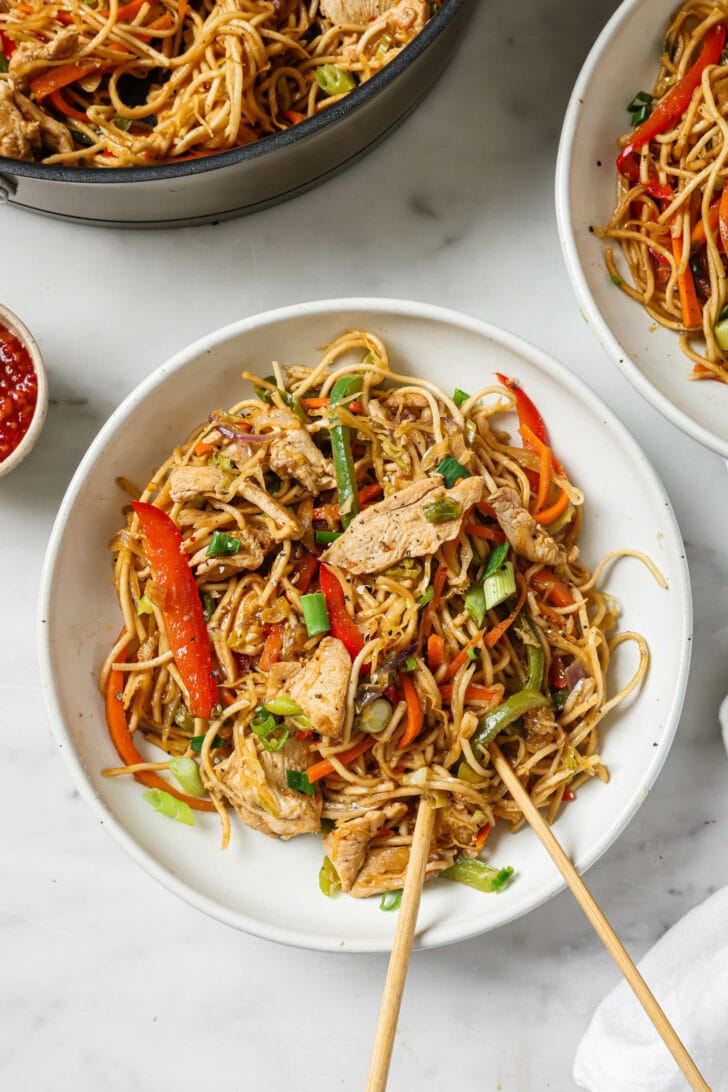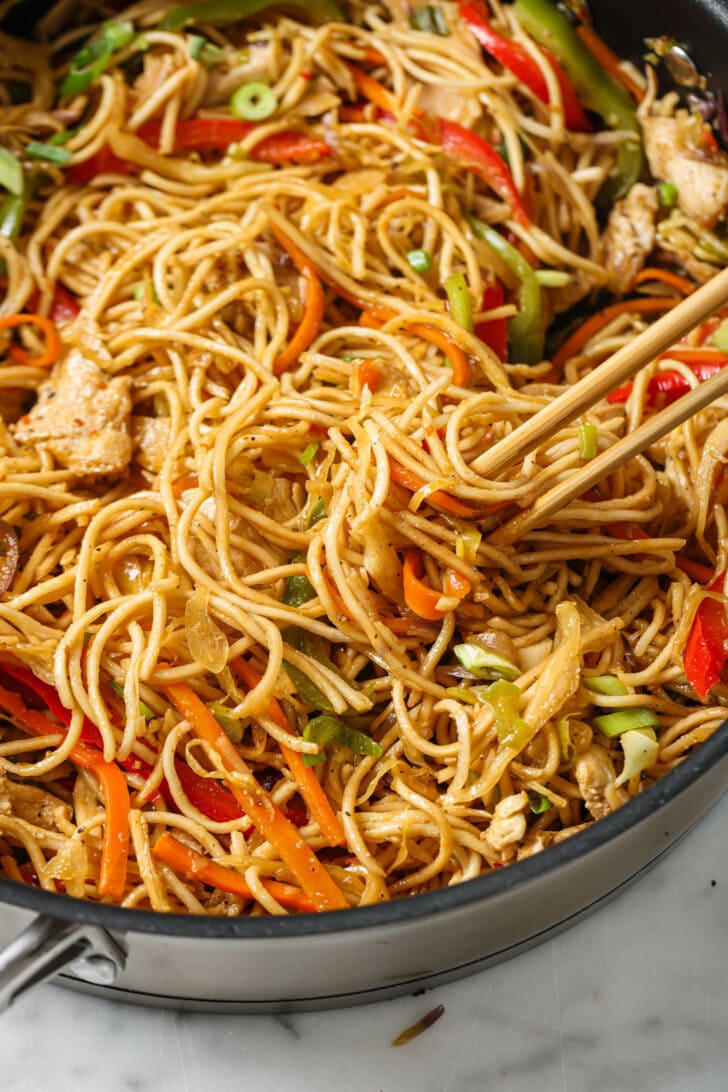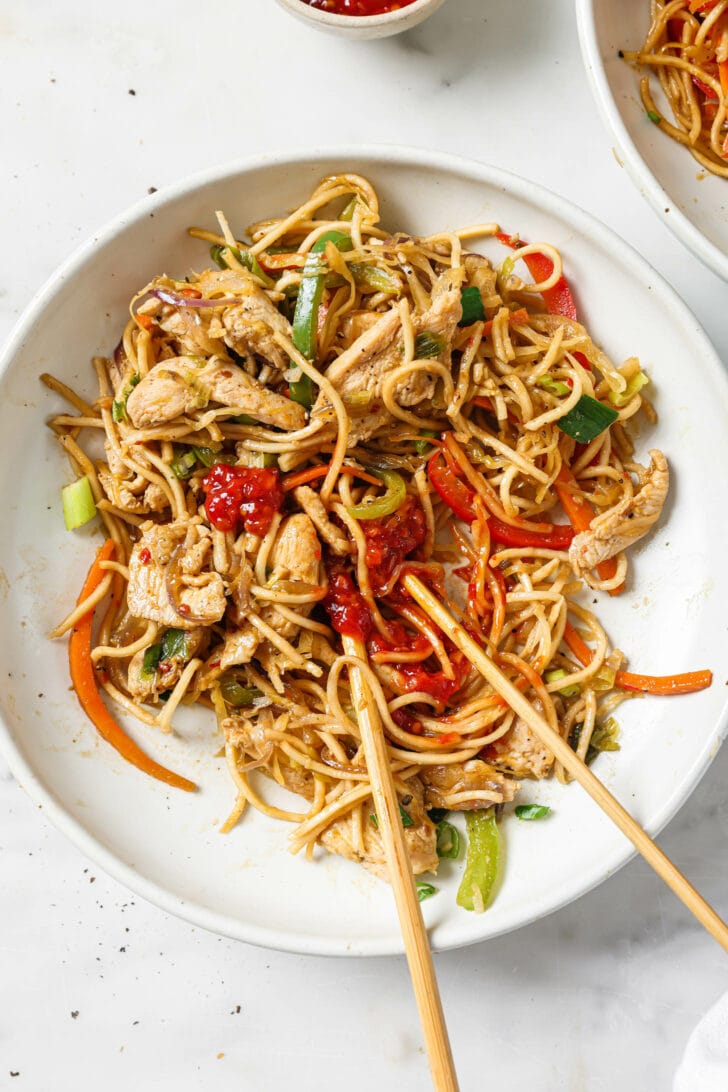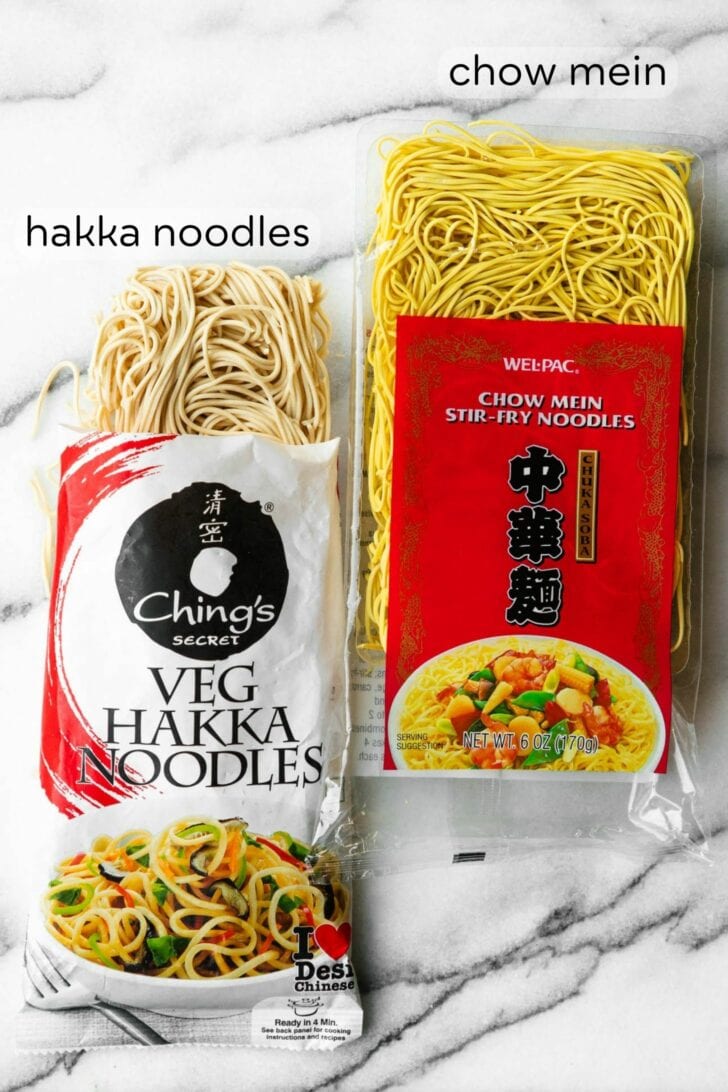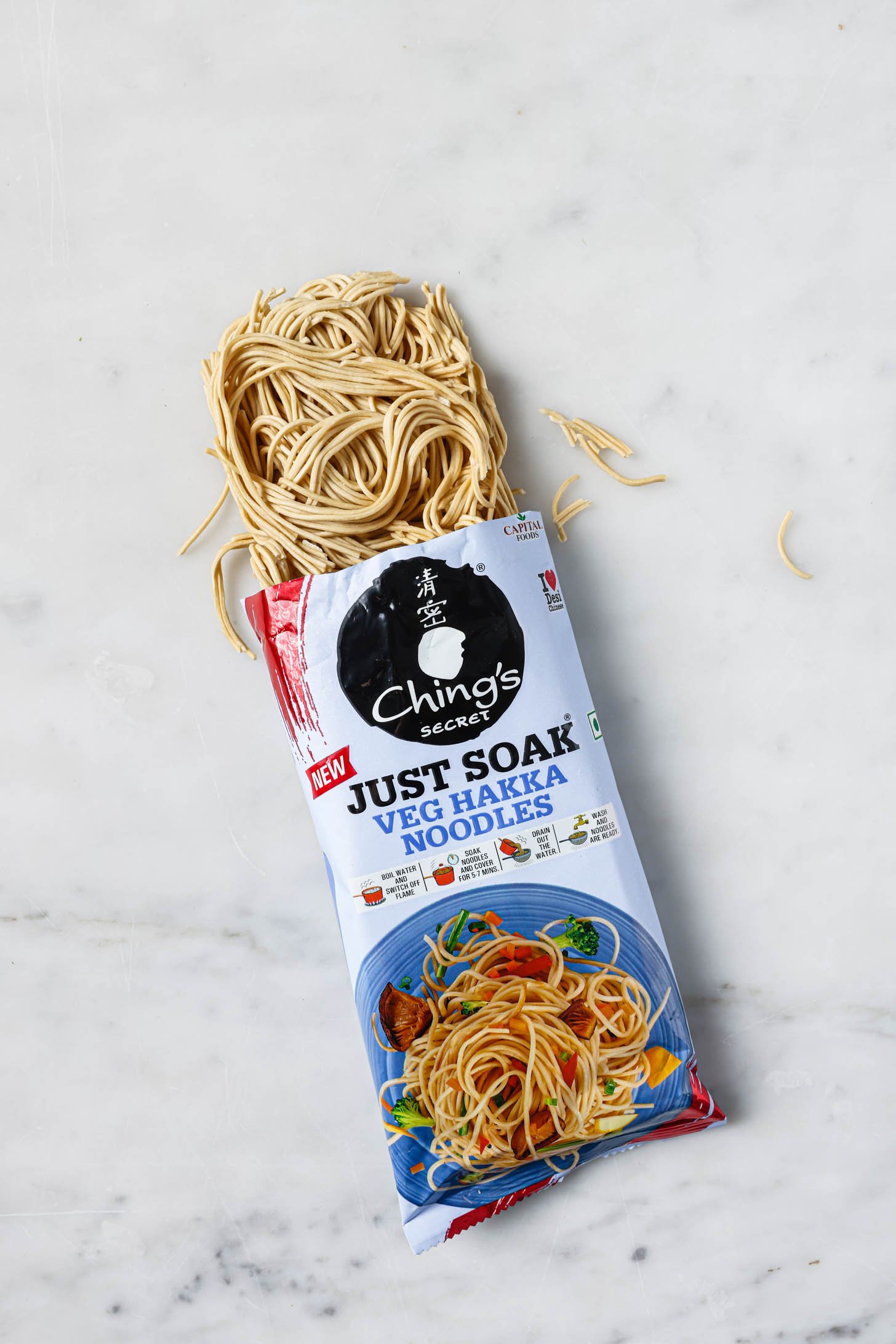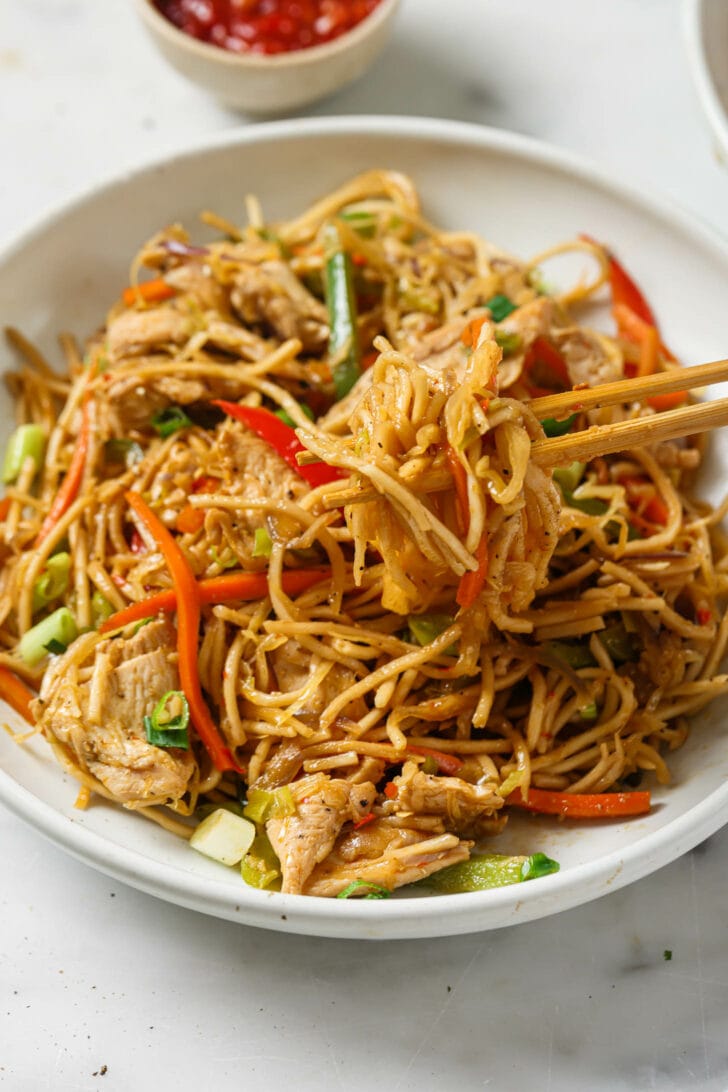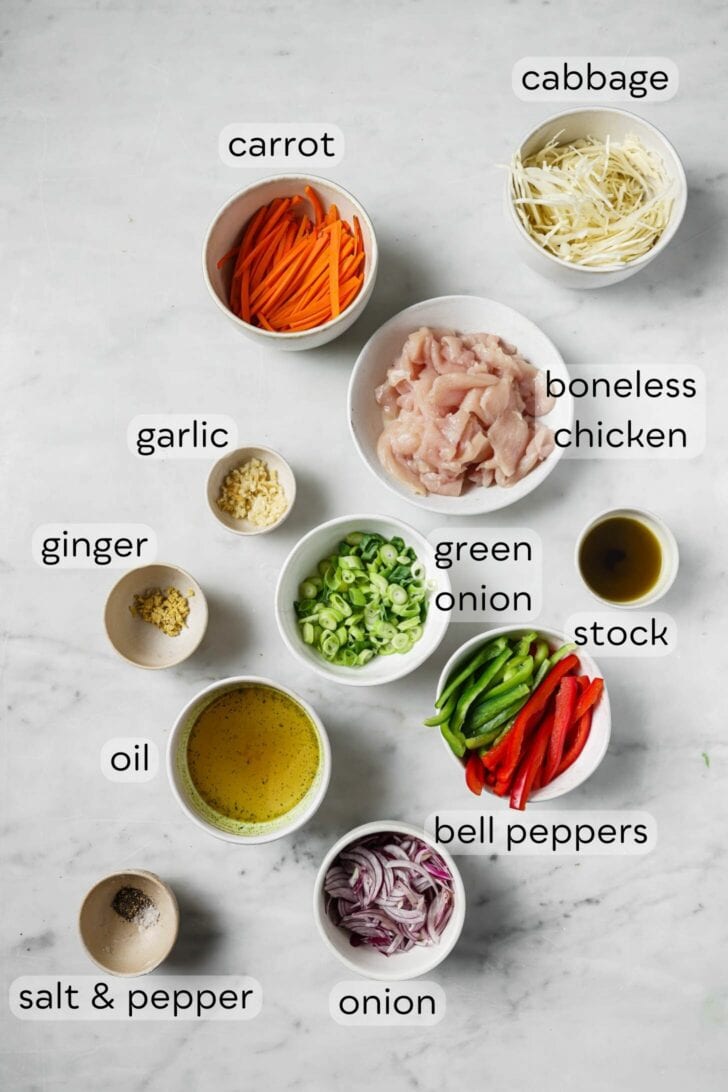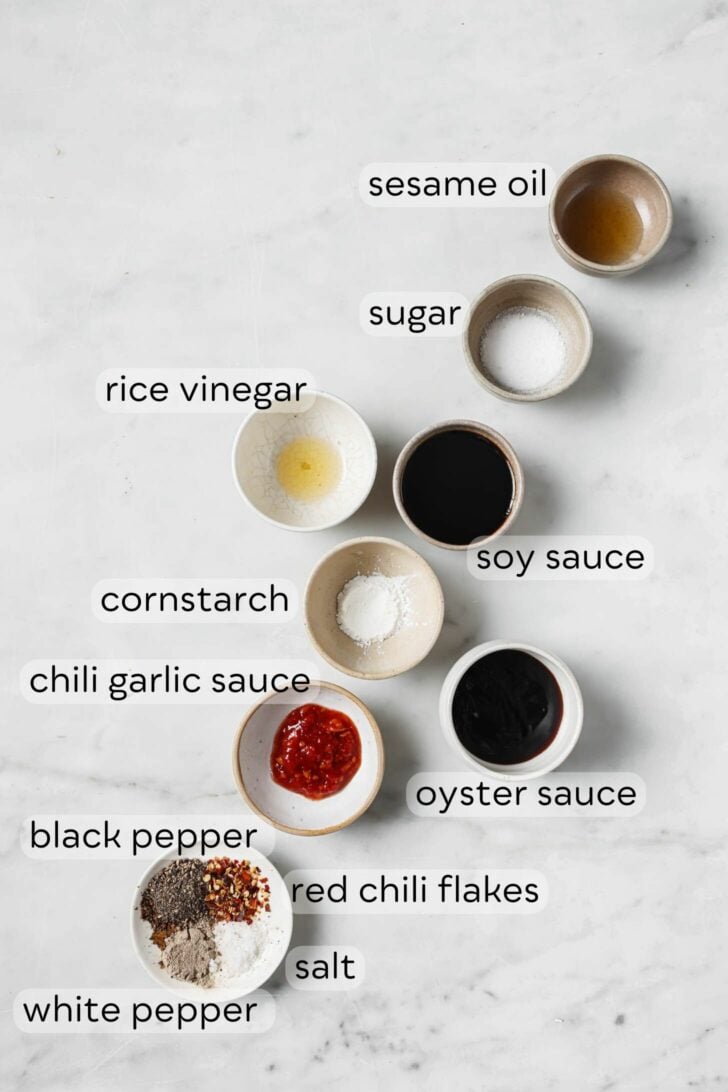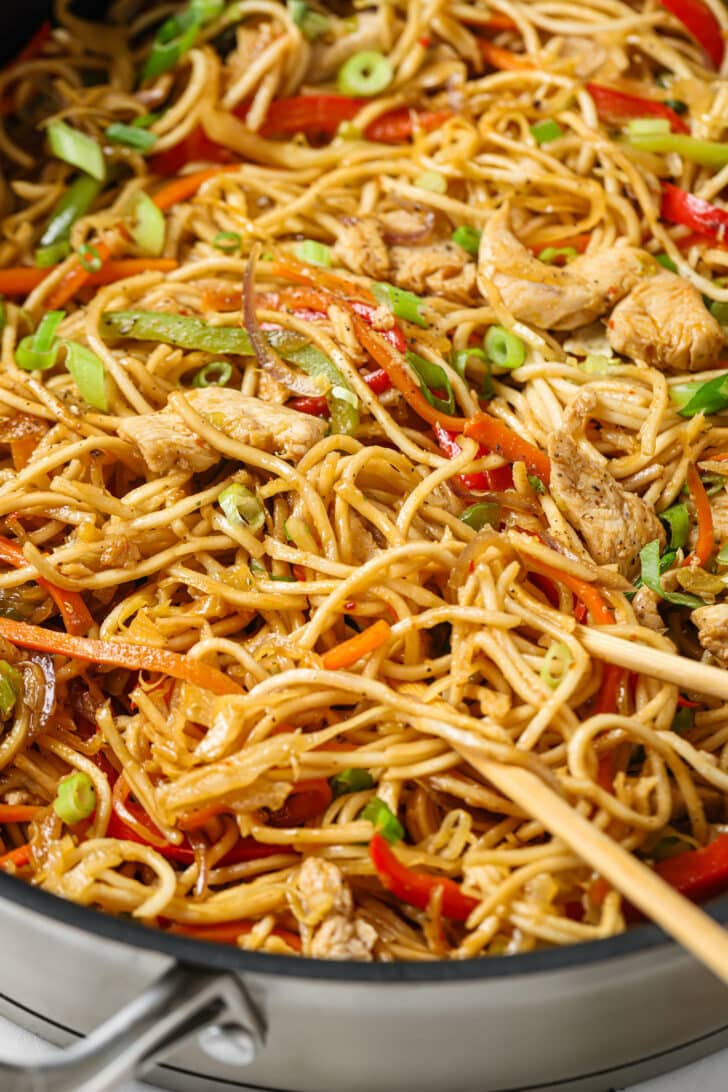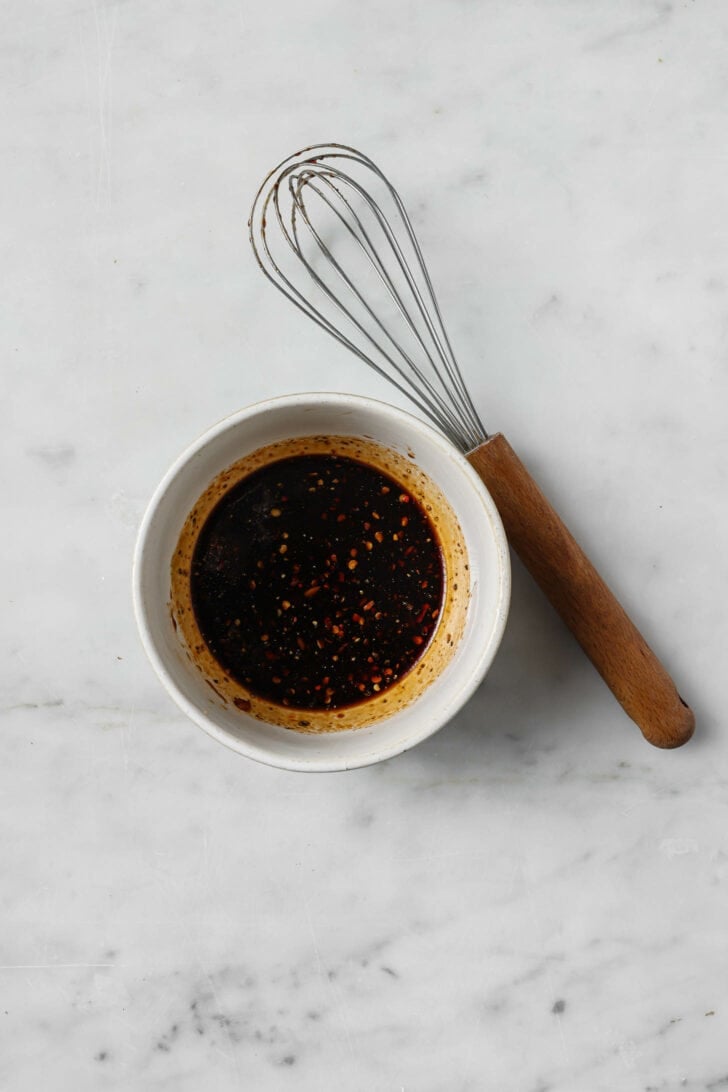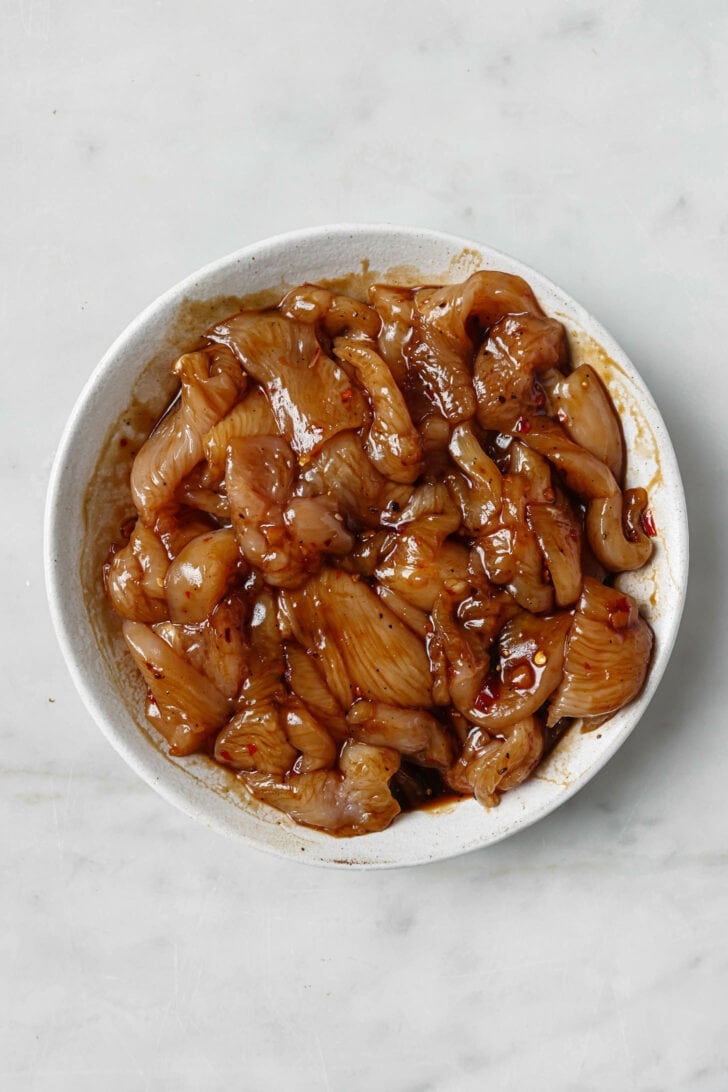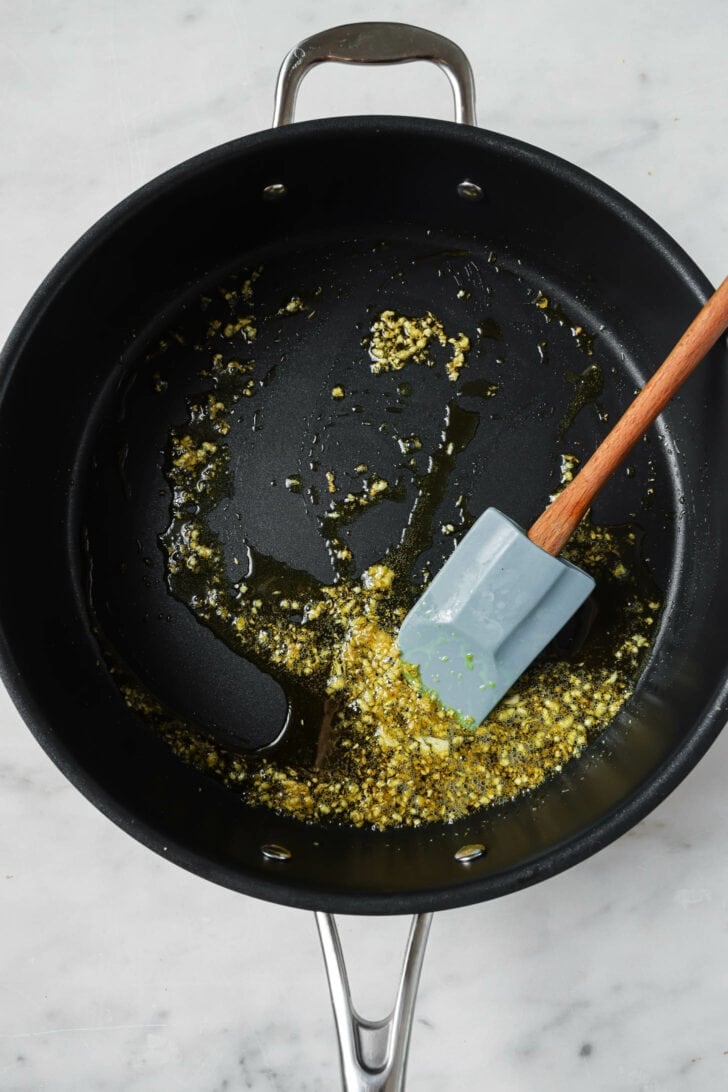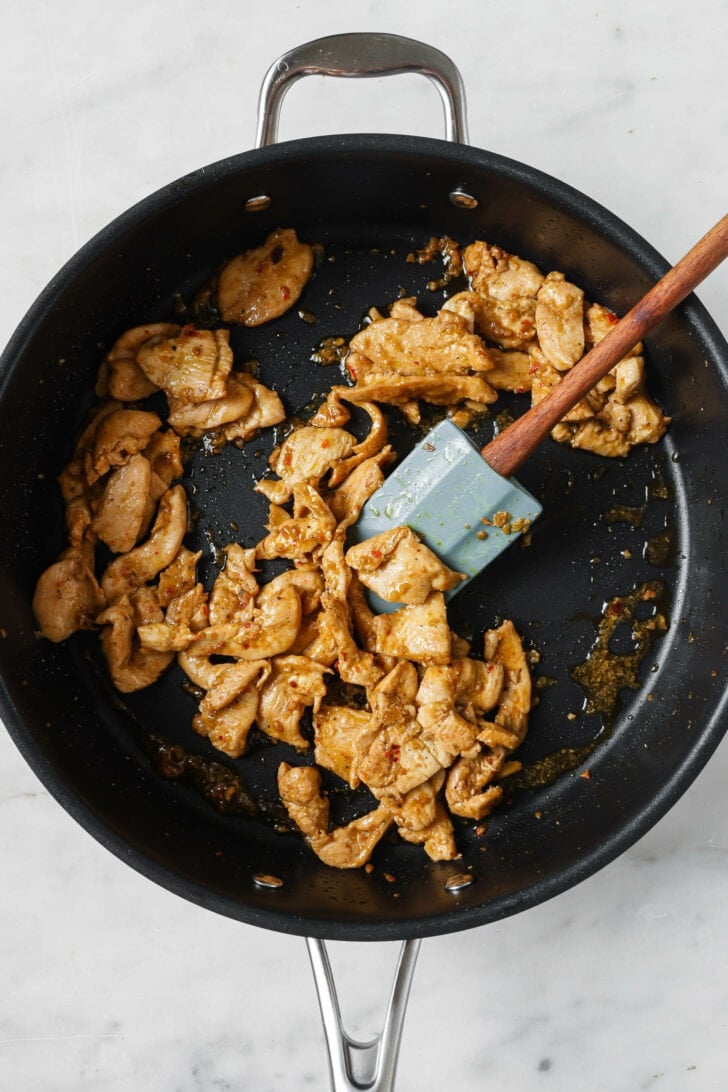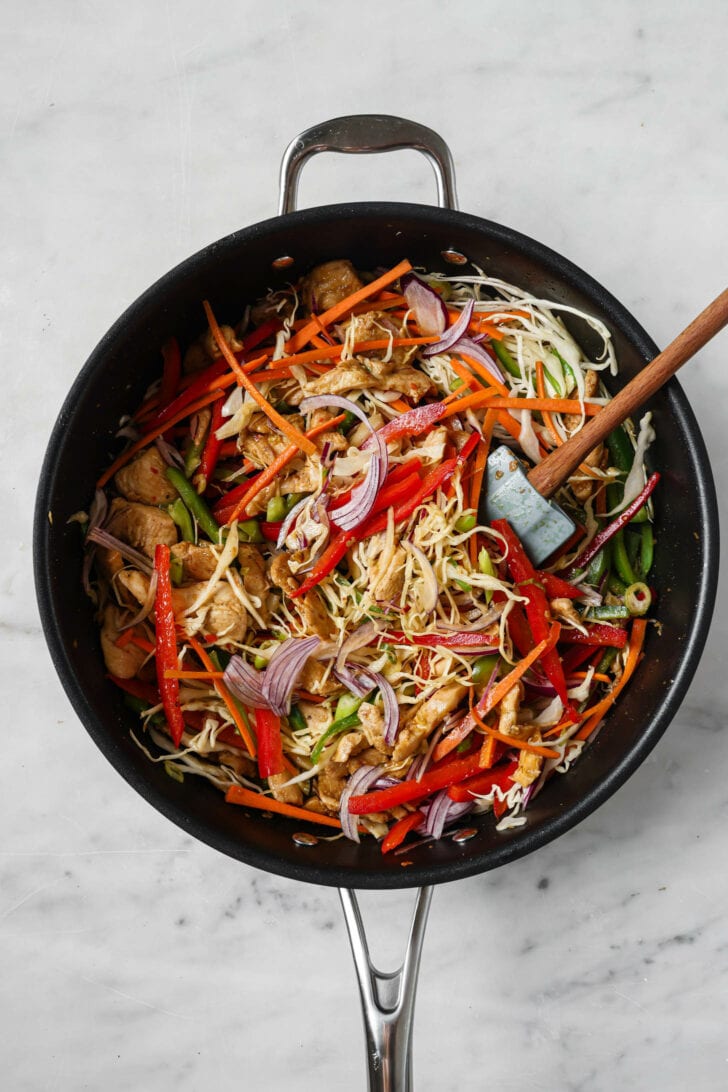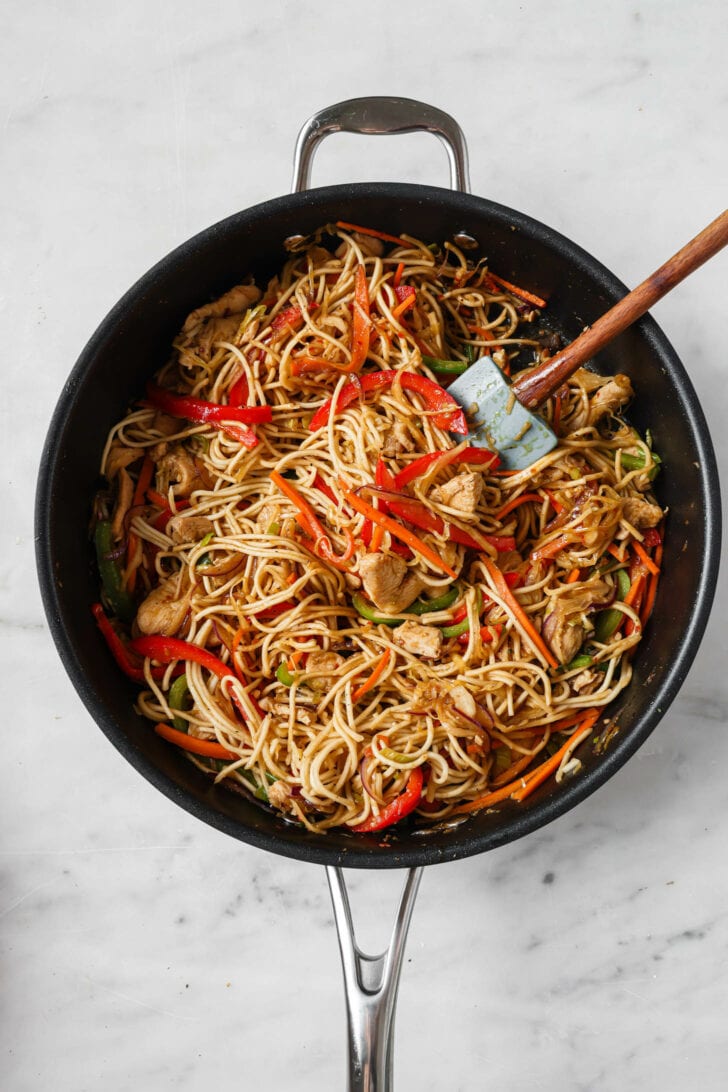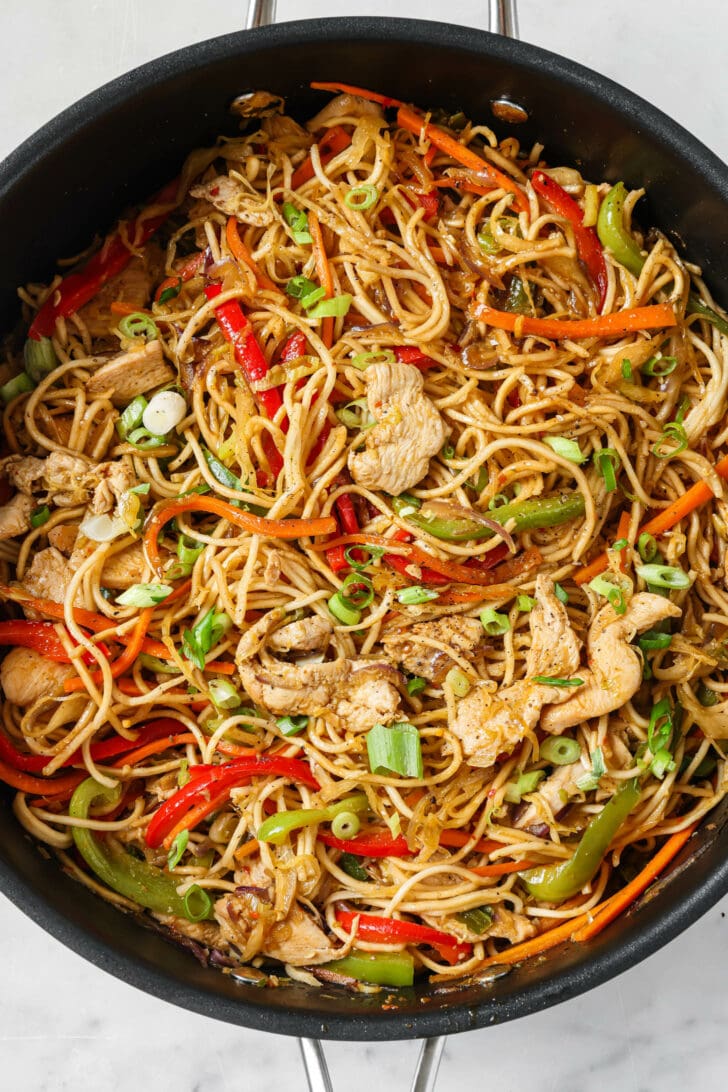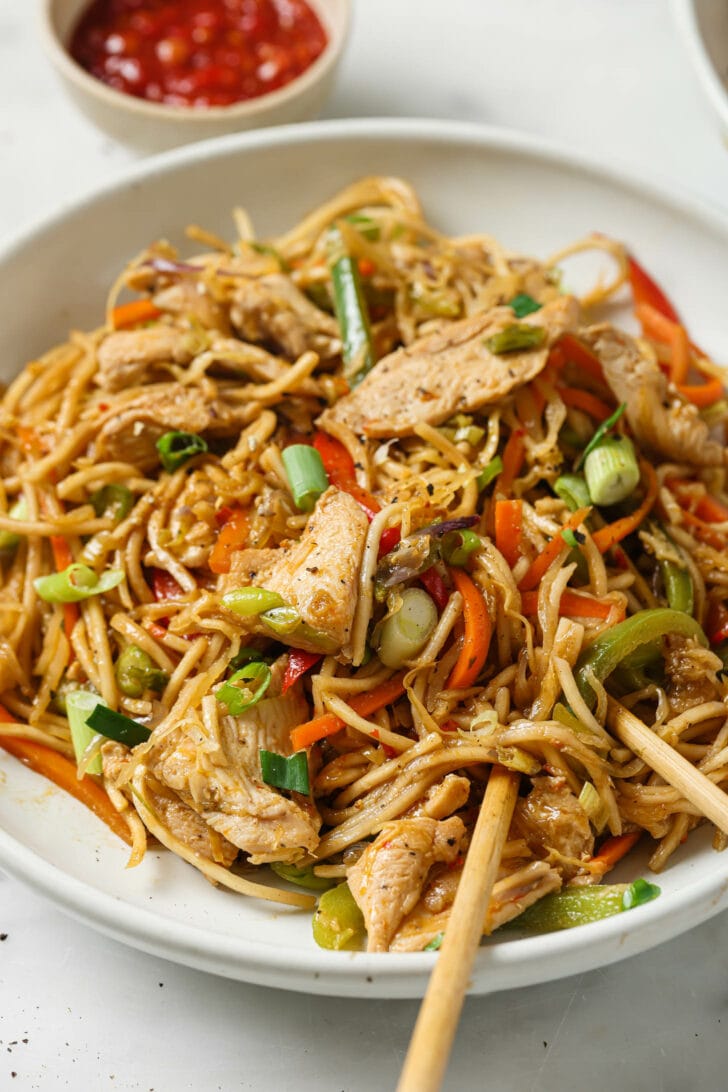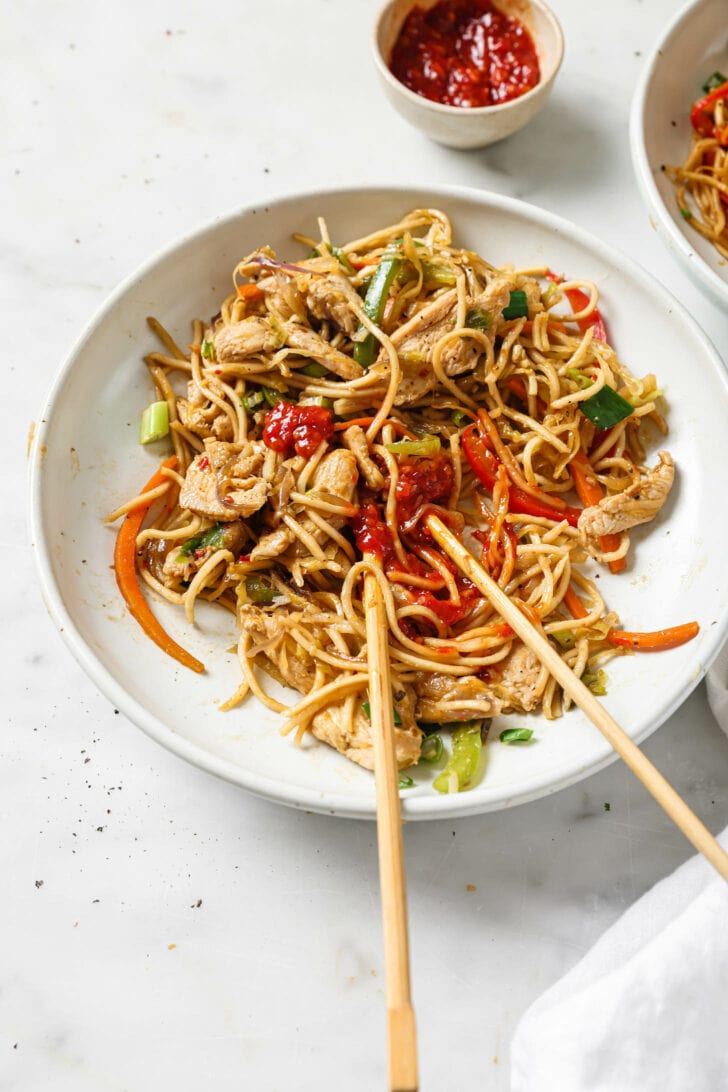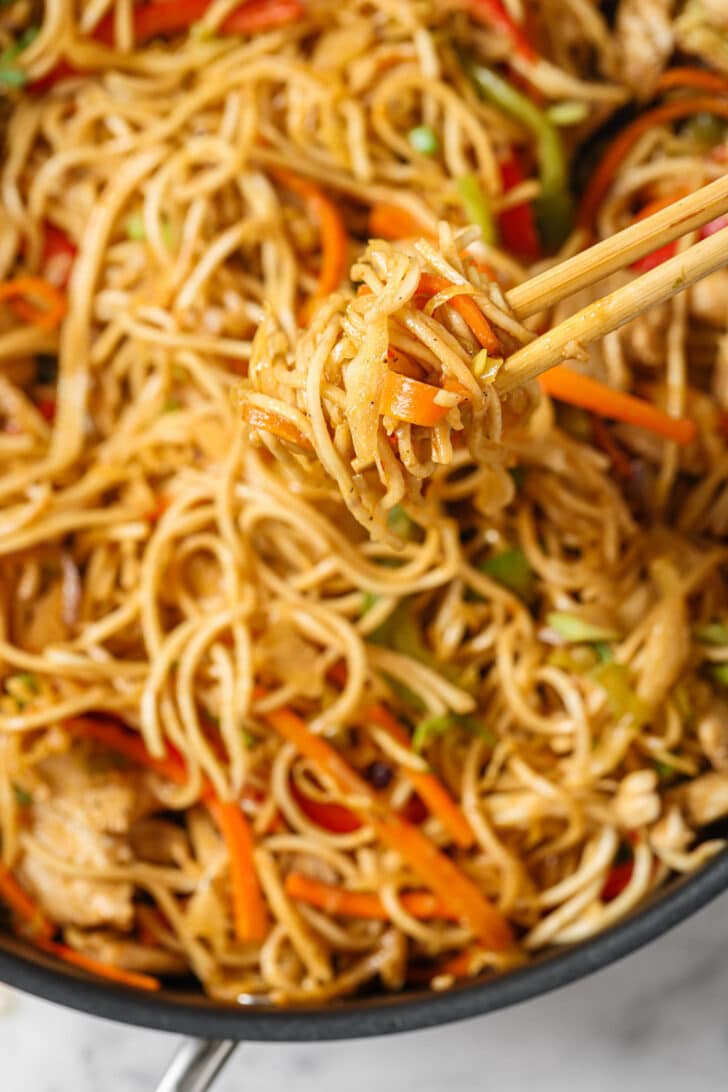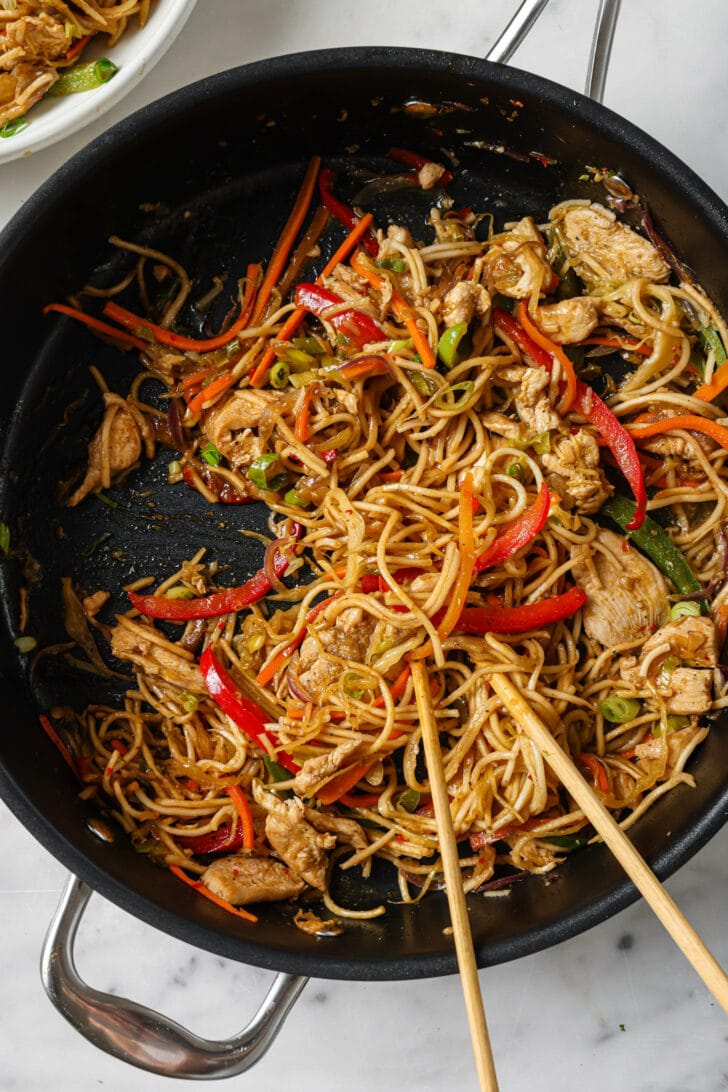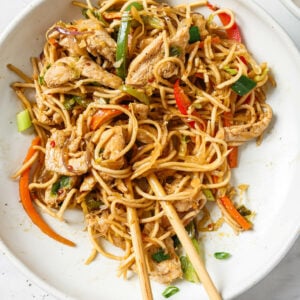Recipe Testing
For years, I’ve been making an Indo-Chinese version of Nagi’s (RecipeTin Eats) Chow Mein. For my version, I: Enter your email below and get it sent straight to your inbox. Plus, get recipes & tips every week!
Omit the alcohol for obvious reasons, then compensate for the acidity with rice vinegar Replace the bean sprouts and half the cabbage with red onion and bell peppers, and Increase the sauce and add chili flakes, chili garlic sauce, and namak mirch (salt & pepper).
Then I had the new recipe tested by eight recipe testers, just for good measure. All to bring you this recipe with little room for error, but lots of space for you to adapt it to your own tastes. Plus, you can use whatever noodles, sauces, and vegetables happen to be available to you.
Chow Mein, but Make it Desi
Hakka Noodles are the Indo-Chinese equivalent of Chow Mein. The term “Hakka”, though often used interchangeably with Indo-Chinese, refers to the food of the Hakka people. While these noodles aren’t a part of authentic Hakka cuisine, they are a South Asian adaptation of Hakka. This version is similar to the ones found in restaurants, though sometimes restaurants keep them simple (i.e. lacking in flavor) to complement other dishes. More Indo-Chinese Favorites: Chilli Chicken, Honey Ginger Chicken, Chicken Manchurian, Chicken Shashlik, and Cashew Chicken.
What Noodles to Use for Hakka Noodles
Firstly, you don’t need to use ‘Hakka Noodles’ for this recipe. As you’d expect, specifically labeled Hakka Noodles are hard-to-find and I only see them in Desi stores. What surprised me was how many people also had a hard time finding Chow Mein noodles. Taking this into account, here’s a summary of your noodle options (hint: they are endless!):
Ching’s Hakka Noodles: There’s an Egg Hakka and Veg Hakka version (pictured above), marketed specifically for Hakka Noodles. Ching’s also has a ‘just soak’ version (used for the photos) which I find doesn’t last well in the fridge. While there’s a slight difference in taste and texture, I wouldn’t say these Hakka noodles are preferable to chow mein, and you certainly don’t need to trek out of your way for them. Chow Mein Noodles: I use Wel-Pac (also pictured above), the only one available at my local grocery store. This one has less ingredients – flour, salt, and a bit of color. Lo Mein Noodles: Thicker than chow mein, also called Egg noodles. ANY noodles: If you’re not able to find any of the above, any thin, dried wheat or egg noodles will work. Yes, even spaghetti (I’d salt the boiling water).
Hakka Noodles Ingredients
Here’s what you’ll need:
Chicken breast or thighs: Chop the chicken into bite-sized pieces, about 1/2-inch. Because chicken breast tends to dry out, I’ve given a tenderizing option in the recipe card. Neutral oil: The original recipe uses peanut oil, which I replace with my usual grapeseed or avocado. Garlic + ginger: Be sure not to crush them using a mortar and pestle, as common in Desi cooking. That would release too much water and make them clumpy, which is fine when they have a safety bed of onions. Here they’re likely to splatter and cook unevenly. Green onions: Also called scallions. Use the white and light green parts for cooking and reserve the green parts for garnish. Vegetables: I use green cabbage (called white cabbage in the UK), carrot, red onion, and bell peppers. Feel free to use store-bought pre-cut veggies to save time. Once chopped, you might want to place all veggies in a bowl to make them easier to toss in all at once. Sea salt: I often use sea salt in my Indo-Chinese recipes because I find it’s closer to the taste of MSG than kosher salt. Lime (optional): Upon the suggestion of a couple testers, I tried a squeeze of lime and adored how it livened up the noodles.
Sauce Ingredients
As much as I hope to reach the pinnacle of any particular recipe, I quickly learned from my recipe testers that preferences vary, and that too widely. Some wanted more spice, others less. Some wanted more sauce, others found the stock unnecessary. Here’s what I’ve chosen and why:
Cornstarch: Used to coat the chicken and thicken the sauce. Soy sauce and Oyster Sauce: Your usual Chow Mein ingredients. I increased the amount from the original recipe to increase sauce and give bolder flavor. Rice vinegar: Adds acidity to the sauce. I started with 1 tsp and most testers suggested I add more, so I tried again with 1 tbsp and found their suggestion agreeable. Sub with distilled white vinegar. Chili garlic sauce: Enhances the tangy, hot, and sweet flavors. Because brands vary in salt, spiciness, and sugar, you’ll have to use your best judgement here. I’ve called for 2 tsp, but up to 1 tbsp is fine for brands like Lee Kum Kee, Huy Fong, and any Indian/Pakistani brands. If you don’t have any on hand, this recipe has enough flavor to do without it. More recipes that use Chili Garlic Sauce: Chicken Shashlik, Chicken Manchurian, Chicken 65 Sugar: To balance the heat and acid with hint of sweetness. Toasted sesame oil: Adds the distinct, nutty Asian flavor. Black pepper: Makes it peppery and pungent. Chili flakes: Add warmth and gentle heat. White pepper: Enhances the umami flavor and I’d highly recommend using it. If you can’t find it, omit. No need to sub with more black pepper. Low-sodium vegetable stock: To add more sauce and flavor. You don’t have to use low-sodium stock, but because the salt in regular stock varies so much, I thought this would be a safer option.
How to make Hakka Noodles
I’m normally not a ‘mise en place’ person but for this recipe I urge you to prep the ingredients before you turn the stove on.
Modifications
Make Veg Hakka Noodles: One of my testers made a vegetarian version. All she had to do was omit the chicken and proceed to sautéing the veggies. She found the salt on the borderline between just right and too much, so I’d omit the 1/8 tsp salt in the sauce, then add more to taste. To Double: For parties, I usually double the recipe, which is enough for a crowd. Double the ingredients but use a larger, wide-bottomed pan, similar to what you’d use to double Pulao or Biryani.
What to Serve with Hakka Noodles
Though they’re flavorful enough as-is, here are some enhancements:
prepare sauce marinate chicken begin boiling water chop veggies cook noodles in boiling water stir-fry
Wedges of lime Chili garlic sauce, sriracha, or ketchup for the kids Chili crisp oil or what I like to think of as ‘Tarka in a jar’
Hakka Noodles also pair well with Indo-Chinese dishes like Chicken Manchurian. Tried this recipe? If you have a minute, please consider leaving a comment telling me how it was! You can also take a quick picture and upload it directly into the comments. If you’re on Instagram, please tag me so I can see your creations. I truly love hearing from you. Thank you!
